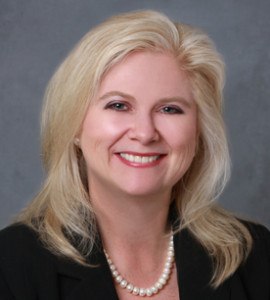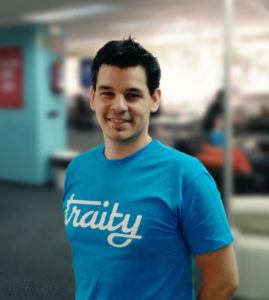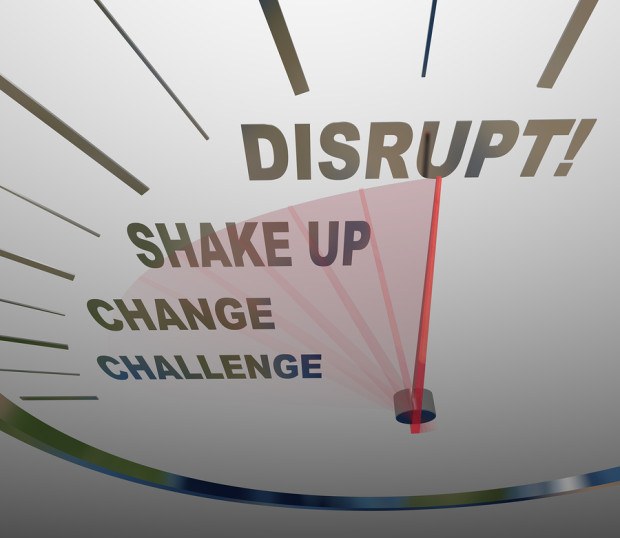Insurers eyeing disruption from the newest cohort of peer-to-peer insurers, including names like Lemonade and Friendsurance, may have be overlooking the biggest potential disrupters of them all—people like the funders of Anabelle Lockwood’s Lemonade Stand.
During the KPMG Annual Insurance conference in September, Laura Hay, National Sector Leader for Insurance, didn’t exactly single out Anabelle or her particular cause—raising money for proper permits to bring her backyard lemonade stand up to code in order to sell her beverages at corporate events and weddings. But Hay did draw insurers’ attention to the means that Anabelle used to raise over $3,000—the website GoFundMe—describing the site as “peer-to-peer social insurance” and warning of its disruptive potential.
“If somebody has an incident, an accident, an emergency—they need money,” then they go on the GoFundMe website and post their stories to raise the funds, said Hay, explaining the concept to insurance executives gathered for the New York conference.
“Already this has raised $1.3 billion, and it raises $4 million a day [with] 80 percent of online traffic coming from Facebook.”

“This could potentially be a massive disruption for the [insurance] industry”
Laura Hay, KPMG
In fact, Hay’s GoFundMe figures were already out of date at the time of her talk. According to numbers published on the “about us” page of the GoFundMe site, “GoFundMe is the world’s largest social fundraising platform, with over $3 billion raised” since it launched in 2010.
The site also reveals that the top five areas for which people use the GoFundMe platform to raise money are:
1) Medical
2) Educational
3) Volunteerism
4) Personal Emergencies
5) Sports and Teams.
“That said, the categories listed on our homepage reflect how GoFundMe is used to cover the costs associated with the ‘long-tail’ of everyday life,” the website discussion continues.
You don’t have to poke around the homepage for long to find posts related to “accidents and emergencies” that might otherwise be covered by property/casualty insurance, including rebuilding and recovery funds for people impacted by fires, floods, hurricanes, earthquakes and other disasters.
Insurance On Demand
Hay, who broadened her remarks to include life and health insurers too, identified the website as a source of disruption during a discussion of the on-demand economy and its impacts on the insurance industry, suggesting that a post-crisis funding campaign is the ultimate form of on-demand insurance.
“The sharing economy is one that blurs the lines between retail, personal and commercial business. It also blurs the line between insurance vs. peer-to-peer ….”
(Editor’s Note: PwC research conducted in 2014, estimated the revenue potential in five sharing economy’ sectors—peer-to-peer finance, online staffing, peer-to-peer accommodation, car sharing and music and video streaming—would reach $335 billion by 2025).
Hay identified three InsurTech companies that are taking advantage of the on-demand economy: Sure, Cuuva and Trōv.
Hay described Sure as a travel insurer that allows someone getting on a plane to pull up an app to buy some insurance before his or her flight takes off. Sure’s website, https://www.sureapp.com/, also hints at other forms of insurance, including other forms of “episodic insurance,” such as wedding insurance. “Easily insure your apartment, your pets, yourself, and the things you care about most. It’s easy and activated in seconds,” the site says showing screenshots of app pages for flight insurance, baggage insurance, smartphone insurance and even renters insurance.)
Hay’s second example, Cuvva, is a “new type of UK car insurance that gets you covered on a car for only as long as you need it—from a single hour to a whole day”—according to Cuvva’s website, which refers to insurance for a friend’s car that you borrow on short notice for a short period of time.
Hay also described an on-demand car insurance idea that allows a car buyer to take a photo of the license plate of the new car their purchasing in order to get it insured, as well as on-demand insurance that allows home insurance policyholders to automatically add coverage to their homeowners insurance policies when they leave for a long trip, to allay worries about flooding, generator malfunctions or other problems that might crop up while their away.
Trōv, which is on-demand insurance for personal items, such as guitars, laptops, and cameras, allows a person to “turn on the insurance [in the] morning to protect the camera from accidental damage, theft or loss, and then….turn it off that night” with a swipe on the Trōv app, according to CEO Scott Walchek. “It’s ‘just-in-time’ insurance,” he told Carrier Management in a recent interview.
Why Millenials?
Walchek believes that app-happy millennials are unlikely to want to sit down with insurance agents to decipher insurance policy language. He says tens of millions are “coming into their acquisitive lives” and prefer to “engage the services they acquire through a mobile device.”

Scott Walchek, Trōv
The full interview, providing more background on Walchek’s career as a technology entrepreneur and his ideas for Trōv will be published in an article titled, “Treasure Trōv: Scott Walchek Unveils Single-Item On-Demand Insurance,” in the fourth-quarter edition of Carrier Management and online later this month for CM members.
But Hay notes that acquisition of bigger things—like homes and autos—the bread-and-butter of the personal lines insurance market, isn’t in the cards for many millennials. Citing the findings of research from KPMG’s Innovation Lab, she said three trends are causing lower demand for insurance among millennials.
- They are delaying life events that normally trigger insurance purchases. “There is decline in millennial ownership of homes [and] 85 percent believe that buying a car is not important,” she said. “They would rather use Uber or public transportation. They have a view that this is better for our environment,” she said, adding that 14 percent fewer millennials than Gen Xers are married.
- They are uneducated about insurance, she said, noting that this is true even for “upscale millennials.”
- Student loan debt “is the root cause of all these other events—moving back home, delaying of life events,” she said, noting that the $1.3 trillion total of student loan debt is greater than all the auto loans and all the credit card debt in the United States.
“A decade ago, the percentage of milliennials (18-30 year olds) with mortgages was 11 percent. Now it’s 7 percent,” Hay said, adding that the percentage that have student loans soared from 25 percent to over 43 percent in one decade.
Bringing all her ideas together, she suggested that millennials really don’t need to buy insurance. And when they do encounter problems that insurance typically solves, they may well opt for the most immediate “just-in-time” insurance available—donations from their friends and social media peers.
“It’s not just about buying from insurance companies. There’s also peer-to-peer” in the form of social insurance like GoFundMe, she said.
This kind of idea resonates with one millennial profiled in a separate Carrier Management article—Juan Cartagena, the CEO of Traity. “Look at the Amish,” Cartagena says. “They don’t buy insurance…But they have a form of post-insurance, where if one of them is ill, everyone chips in financially to help that person. This is the definition of a very resilient network.”
Trust Among Peers
 “We’re helping people trust each other.”
“We’re helping people trust each other.”
Juan Cartagena, Traity
Instead, Traity has developed algorithms that sort through a person’s social networking behavior to score their trustworthiness—giving more comfort to landlords and landlord protection insurers about rental property applicants. (See related article, “Network of Trust: How Traity’s Cartagena Is Improving the World, One Reputation at a Time,” for more details.)
“We’re helping people trust each other,” he said.
Cartagena said he also envisions the possibility of using Traity’s social networking reputation scores to make car insurance more affordable for teenagers. But a seemingly less analytical process than Traity’s score for linking social media behavior to driver riskiness hit a roadblock recently, according to various media reports out the UK.
According to reports in The Guardian and BBC news, UK insurer Admiral had developed a plan to offer discounts to young first-time car buyers by analyzing a driver’s Facebook posts. Clues about personality traits linked to safe driving might be uncovered through the posting habits of Facebook users, the insurer reasoned. For example, those “who write in short, concise sentences, use lists, and arrange to meet friends at a set time and place, rather than just ‘tonight,’ would be identified as conscientious,” The Guardian report noted.
The “reputational track record” that Admiral hoped to create to make judgments about a driver’s risk level “in the absence of a driving history or no claims bonus” was blocked by Facebook earlier this month, BBC news reported, citing Facebook’s concerns about the privacy of its users.





















 Triple-I: Insurance Economic Drivers Outperform Overall U.S. GDP
Triple-I: Insurance Economic Drivers Outperform Overall U.S. GDP  La Nina 60% Likely to Develop Between June-August
La Nina 60% Likely to Develop Between June-August  AI-Powered Insurance Product Development Is Going to Take Some Powering Through
AI-Powered Insurance Product Development Is Going to Take Some Powering Through  Allstate’s Safe Driving App Helps Reduce Chance of Collision by 25%
Allstate’s Safe Driving App Helps Reduce Chance of Collision by 25% 









